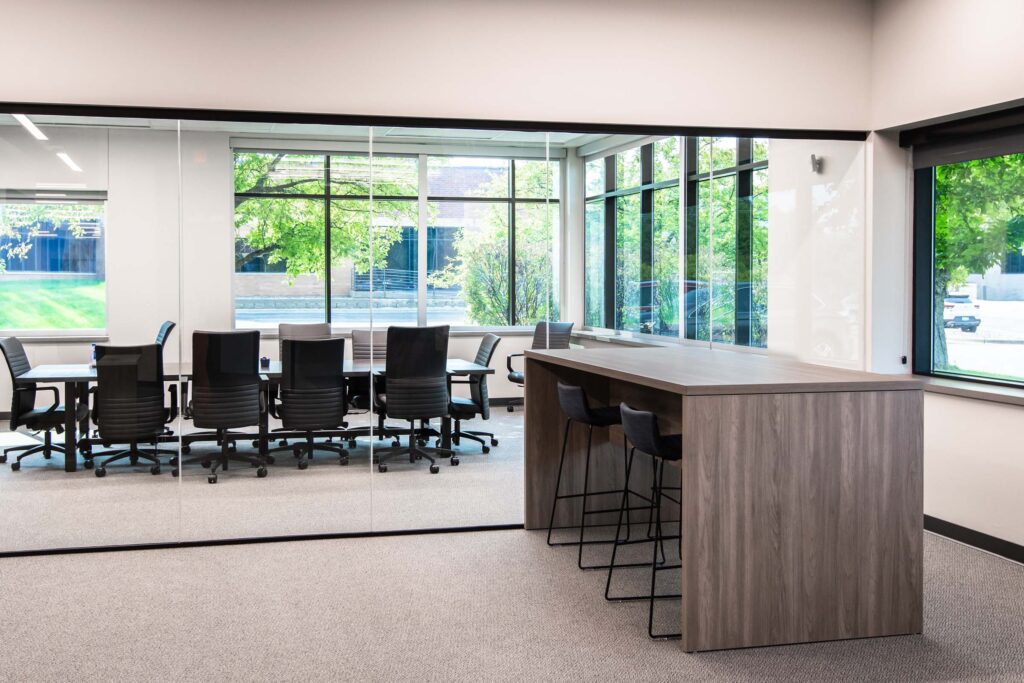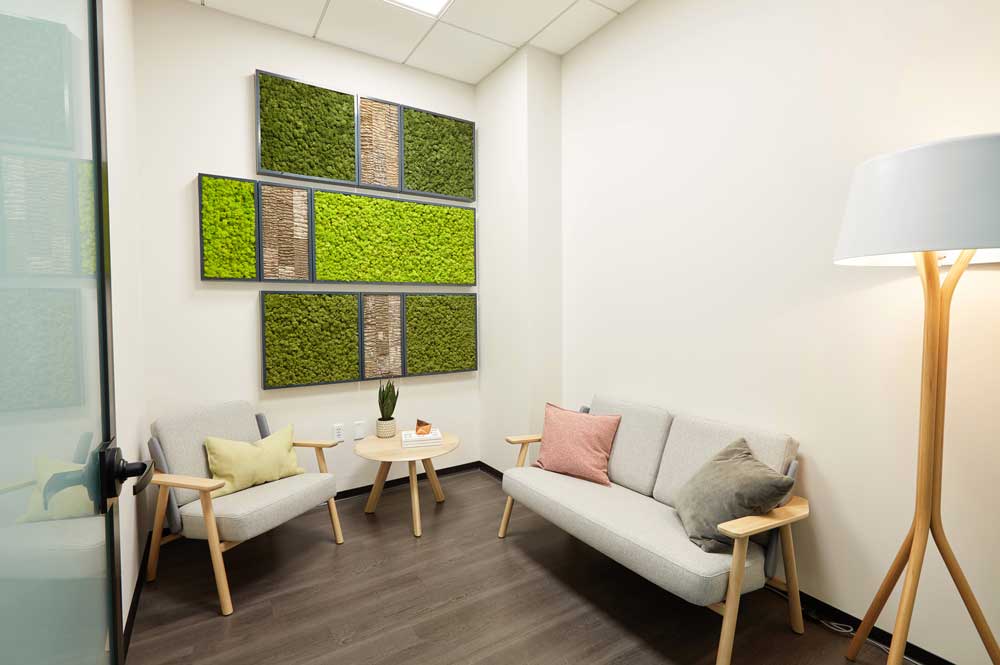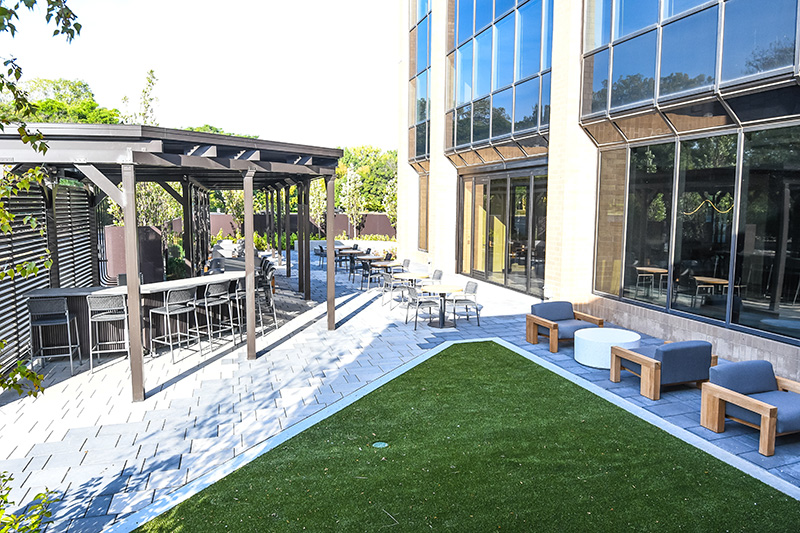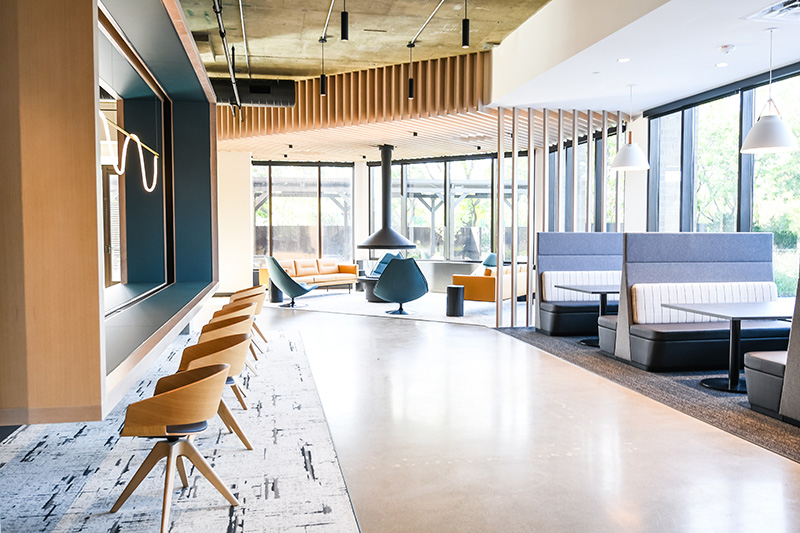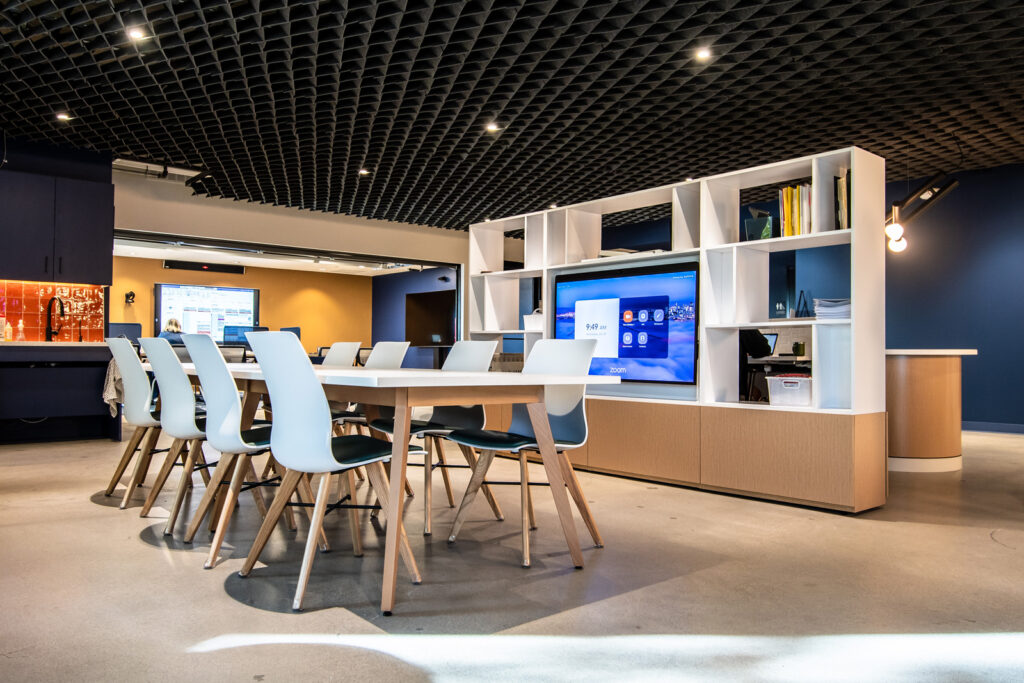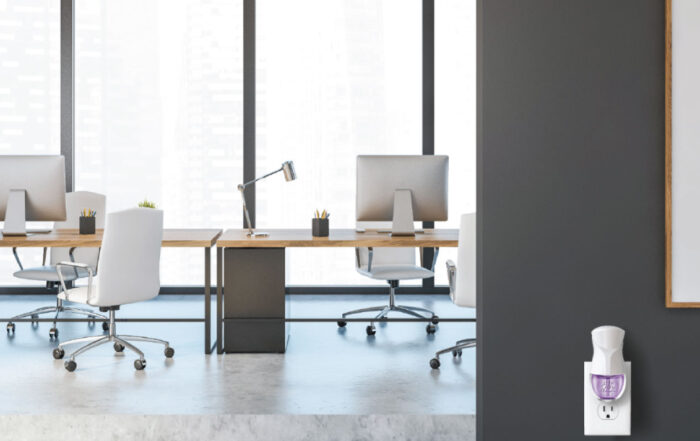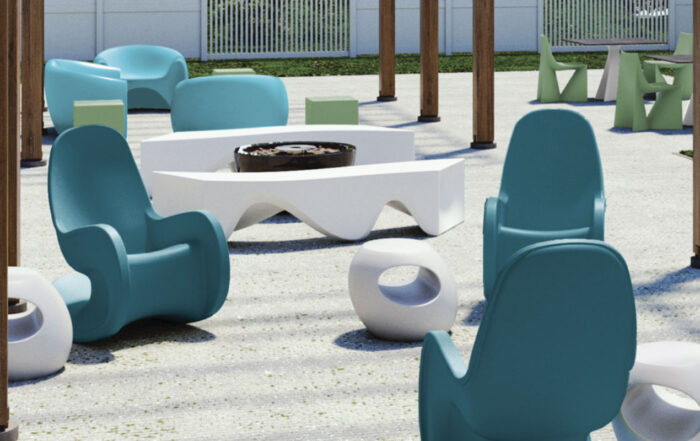What is Biophilic Design?
Biophilic office design as a concept is derived from the theory of ‘Biophilia’. The biophilia hypothesis suggests that there is an intrinsic human nature connection with the natural world. ‘Biophilia’ originates from Greek, literally meaning a love of life or living things, and this is the idea that the human fascination and need to interact with nature stems from a biological drive to interact with other living things such as plants and animals. In a nutshell, biophilic design is about supporting our innate need to connect with nature in the modern urban environment.
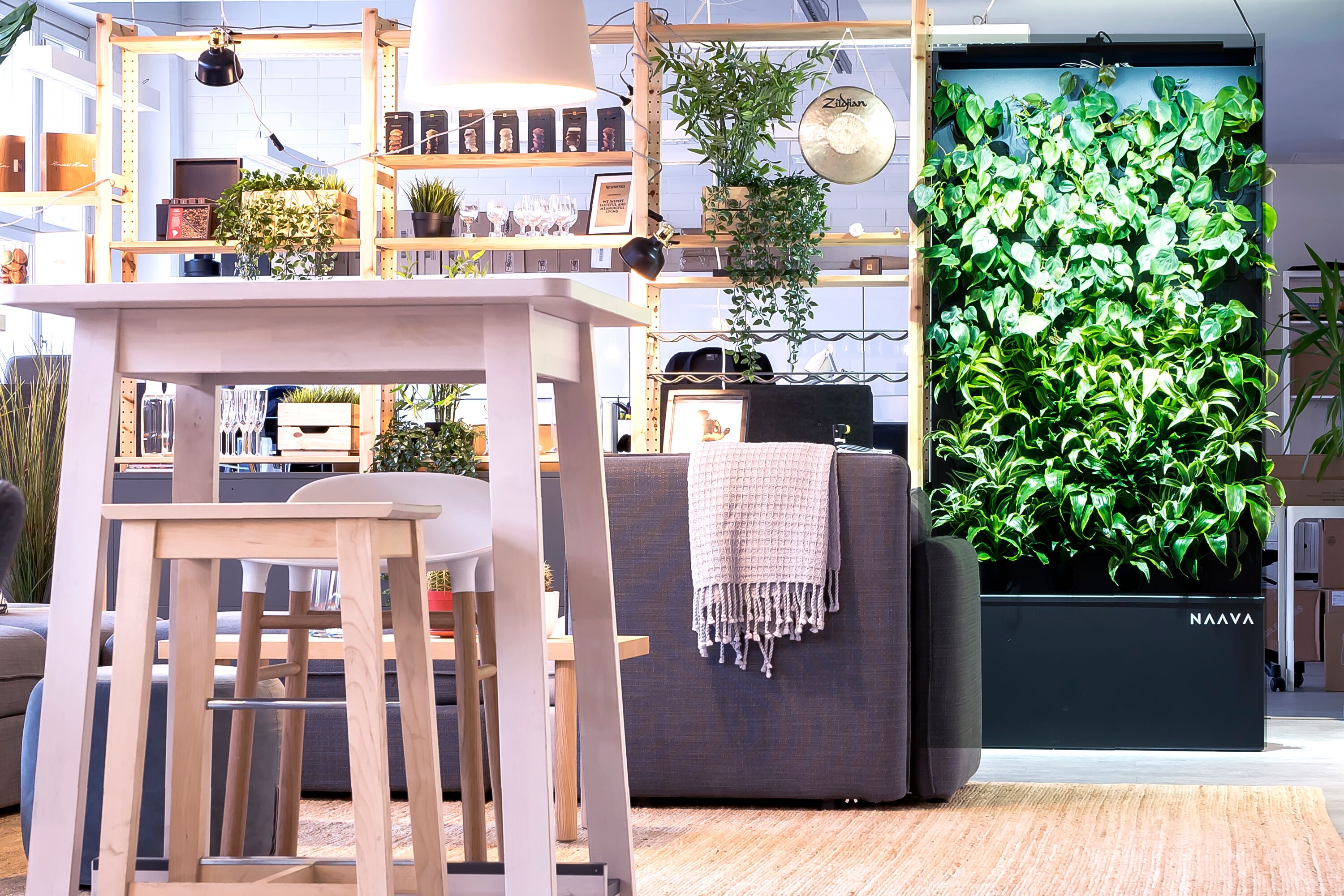
BENEFITS
The benefits of biophilic design are far-reaching and encompass both the physical and psychological well-being of employees. By weaving natural elements into your interior spaces, biophilic design not only creates visually appealing surroundings but also contributes to faster healing in healthcare settings, increased profitability in retail establishments, and heightened employee productivity through improved indoor air quality and overall satisfaction.
- Reduce Stress Incorporating plants into the workspace will result in employees reconnecting with nature and this is proven to alleviate feelings of stress according to many studies. One study showed that the presence of plants in offices can lower stress and anxiety levels by up to 37%, as well as decreasing tiredness by up to 38%.
- Enhance Mood & Creativity Nature is known to stimulate the brain and so allows for creativity to flow more effectively. Nature in an office design can also create a positive and peaceful mindset which will lead to more interactions in the workplace amongst colleagues, improving both collaboration and innovation.
- Increase Productivity A series of studies from Exeter University revealed that employees were 15% more productive when workplaces were filled with just a few houseplants.
- Improve Health Research by Norway’s Agricultural University in Oslo found that plants remove harmful volatile organic compounds, such as formaldehyde and benzene that is found in paint, carpet, and furniture of most buildings. In fact, plants are said to improve the air quality by up to 75%.
SIX PRINCIPLES OF BIOPHILIC DESIGN
At its core, biophilic design is about the overall environment and space, and less about a single or non-correlated occurrence of natural elements. The biophilic elements should tie together the entire home or office environment, integrating it together into an interconnected ecosystem. It is through the continuous engagement with natural elements that the benefits of biophilic spaces come through. The six biophilic elements are:

